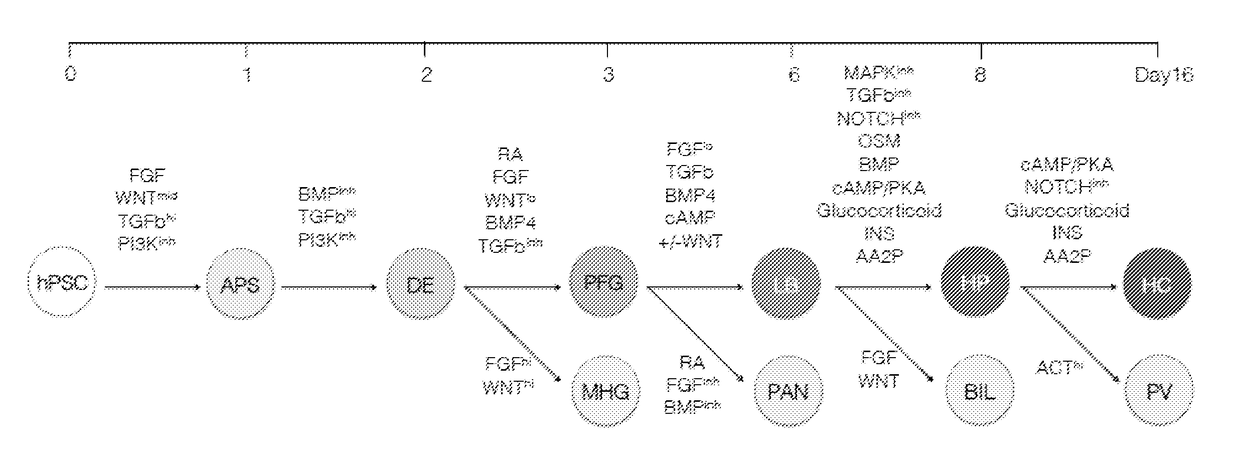Methods of differentiating stem cells into liver cell lineages
a stem cell and liver cell technology, applied in the field of biotechnology, can solve the problems of liver function maturation, liver specification, liver cell formation, and limited understanding of processes including liver specification, and achieve the effect of increasing the expression of alb
- Summary
- Abstract
- Description
- Claims
- Application Information
AI Technical Summary
Benefits of technology
Problems solved by technology
Method used
Image
Examples
Embodiment Construction
Definitions
[0033]The following words and terms used herein shall have the meaning indicated:
[0034]As used herein, the term “stem cells” include but are not limited to undifferentiated cells defined by their ability at the single cell level to both self-renew and differentiate to produce progeny cells, including self-renewing progenitors, non-renewing progenitors, and terminally differentiated cells. For example, “stem cells” may include (1) totipotent stem cells; (2) pluripotent stem cells; (3) multipotent stem cells; (4) oligopotent stem cells; and (5) unipotent stem cells.
[0035]As used herein, the term “pluripotent stem cell” (PSC) refers to a cell with the developmental potential, under different conditions, to differentiate to cell types characteristic of all three germ cell layers, i.e., endoderm (e.g., gut tissue), mesoderm (including blood, muscle, and vessels), and ectoderm (such as skin and nerve). The developmental competency of a cell to differentiate to all three germ la...
PUM
| Property | Measurement | Unit |
|---|---|---|
| PKA | aaaaa | aaaaa |
| concentration | aaaaa | aaaaa |
| PKA | aaaaa | aaaaa |
Abstract
Description
Claims
Application Information
 Login to View More
Login to View More - R&D
- Intellectual Property
- Life Sciences
- Materials
- Tech Scout
- Unparalleled Data Quality
- Higher Quality Content
- 60% Fewer Hallucinations
Browse by: Latest US Patents, China's latest patents, Technical Efficacy Thesaurus, Application Domain, Technology Topic, Popular Technical Reports.
© 2025 PatSnap. All rights reserved.Legal|Privacy policy|Modern Slavery Act Transparency Statement|Sitemap|About US| Contact US: help@patsnap.com



